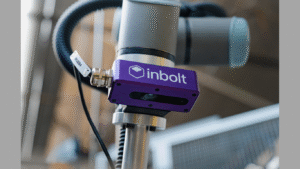Fast, reliable internet has shifted from luxury to necessity. Whether you work from home, run a household filled with connected devices, or simply enjoy streaming, your internet provider plays a direct role in your daily efficiency. Yet many households pay too much for underperforming services. A smart financial approach to selecting an internet provider protects both your time and wallet. With the right plan, you can cut unnecessary costs and ensure your service matches your actual needs.
Identify Your Real Usage Needs
Begin by evaluating your internet habits. A single-person household that primarily checks email and watches occasional videos requires a different setup than a family of five running multiple devices at once. Internet speed and bandwidth directly impact performance and pricing. Avoid the common trap of paying for top-tier speeds that no one in the home ever fully utilizes.
Track how often devices in your home stream HD or 4K content, join video calls, or download large files. Online gaming and smart home integrations may require higher speeds, but casual browsing won’t. Internet service providers often market their fastest plans as the default, but stepping down one or two tiers could lead to significant monthly savings without affecting your experience.
Review Equipment Fees and Hidden Charges
Monthly bills often contain fees you never anticipated. Many providers charge extra for routers or modems, even when they appear “free” at signup. Equipment rental fees range from $10 to $20 per month, which adds up quickly. Over a two-year contract, you might pay hundreds for hardware that you could buy once for far less.
When possible, purchase your own equipment. Verify with the provider that your hardware meets their specifications. Don’t forget to ask about installation fees, early termination penalties, and service taxes. Providers sometimes bury these numbers in the fine print or only disclose them after you commit.

Compare Local Options With Honest Reviews
The best internet provider in one neighborhood might underperform in another. Service quality depends on infrastructure, population density, and maintenance. Use review platforms that allow local filtering to find feedback from nearby customers. Look for trends in outages, billing issues, or poor customer service.
Speed test tools help you see real-world performance comparisons if you have neighbors using different providers. Local forums or community groups often contain candid experiences that offer more transparency than branded marketing materials. You gain extra value when you monitor Wi-Fi performance in Islip using speed test logs and location-specific metrics. This helps match promotional promises with real-world delivery, leading to smarter service decisions. If a provider delivers consistent speeds and strong uptime in your area, the investment becomes easier to justify.
Bundle With Caution
Bundling internet with cable, phone, or mobile services may appear cost-effective. Providers often promote these packages as limited-time deals, but you must review each service’s value separately. If you rarely watch live TV or already use a streaming platform, the bundled cable service may never get used.
Track the monthly cost of each service on its own. Then compare it to the bundle’s total. Pay attention to how much the price increases after promotional periods expire. Some bundles lock you into services you don’t need, requiring you to pay extra for early exit. A la carte selections might offer better value in the long run.
Don’t Overlook Upload Speeds
Many users focus on download speed alone. Yet upload speed plays an important role in daily tasks if you use cloud storage, participate in video calls, or share large files for work. Sluggish upload speeds cause buffering during video conferences and delays when backing up photos or documents.
Some providers throttle upload speeds to save bandwidth in lower-cost plans. Always verify both download and upload numbers when comparing plans. If you upload content regularly, opt for a symmetrical plan that offers equal speeds in both directions. Business-class or fiber-optic services tend to offer this balance more often.
Customer Service Shapes Long-Term Satisfaction
Your relationship with an internet provider doesn’t end after installation. Problems will arise. Whether it’s a billing error, service outage, or equipment issue, how a provider responds determines your satisfaction.
Test customer service before signing up. Use online chat or phone support to ask basic questions. Evaluate how quickly representatives respond and whether they provide clear answers. Providers that prioritize human service, transparency, and real-time solutions often lead to better long-term experiences.
Some companies outsource support to third parties who lack direct access to your account. This delays resolution and creates frustration. Prioritize providers with dedicated, in-house customer service teams.
Your internet service plays a major role in your productivity, communication, and digital safety. Rushed decisions or long-term contracts without research could cost more than expected. Take the time to align your real usage with what providers offer. Read reviews, measure actual performance, and evaluate fees beyond the advertised rates. With a thoughtful approach, you gain reliable service without overspending or sacrificing quality.
Blog received via Mail






























